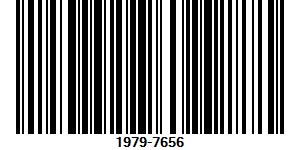Klasterisasi Obat Berdasarkan Tipe dan Komposisi Sejenis pada Bagian Farmasi Rumah Sakit Queen Latifa
DOI:
https://doi.org/10.30989/teknomatika.v13i2.1120Keywords:
Data Mining, Drug Inventory Control, Healthcare Services, K-Means AlgorithmAbstract
One important element in maintaining and improving the quality of healthcare services is the availability of adequate medication. Drugs are a crucial component used in the provision of healthcare services, and the expenses associated with them constitute a significant portion of overall healthcare costs. The implementation of data mining can aid in analyzing drug usage to obtain information that can be utilized for planning and controlling drug inventory, with one of the methods being the utilization of the K-Means algorithm. The K-Means algorithm is the most popular and widely used clustering method in data mining. This research aims to facilitate pharmacy personnel in identifying groups of drug types with similar characteristics and compositions. As a result, the categorization of a large number of drugs can be performed more efficiently and accurately. Moreover, with the grouping of drugs based on similar characteristics and compositions, pharmacy personnel can easily monitor the availability of specific medications and take appropriate actions in managing drug supplies at the hospital.
References
[2] V. Kotu and B. Deshpande, Predictive analytics and data mining: concepts and practice with rapidminer. Morgan Kaufmann, 2014.
[3] E. Elmayati, “Data Mining Dengan Metode Clustering Untuk Pengolahan Informasi Persediaan Obat Pada Klinik Srikandi Medika Berbasis Web,” Pelita Informatika: Informasi dan Informatika, vol. 6, no. 2, pp. 159–164, 2017.
[4] P. W. Cahyo, “Klasterisasi Tipe Pembelajar Sebagai Parameter Evaluasi Kualitas Pendidikan Di Perguruan Tinggi,” Teknomatika, vol. 11, no. 1, pp. 49–55, 2018.
[5] M. H. Adiya and Y. Desnelita, “Jurnal Nasional Teknologi dan Sistem Informasi Penerapan Algoritma K-Means Untuk Clustering Data Obat-Obatan Pada RSUD Pekanbaru,” vol, vol. 1, pp. 17–24, 2019.
[6] M. B. Objek and E. Revisi, “Informatika Bandung,” Rosa AS, 2004.
[7] M. R. Arief, “Pemrograman web dinamis menggunakan php dan mysql,” Yogyakarta: Andi, pp. 7–19, 2011.
[8] A. Saputra, Panduan Menguasai PHP & MySQL Secara Otodidak. Yogyakarta, 2012.
[9] M. Bora, D. Jyoti, D. Gupta, and A. Kumar, “Effect of different distance measures on the performance of K-means algorithm: an experimental study in Matlab,” arXiv preprint arXiv:1405.7471, 2014.
[10] S. Mulyani and others, Analisis dan Perancangan Sistem Informasi Manajemen Keuangan Daerah: Notasi Pemodelan Unified Modeling Language (UML). Abdi Sistematika, 2017.










